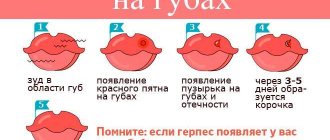Educational toys for 1 month old babies.
As a rule, during this period the baby sleeps all the time, and periods of wakefulness are very short. At this age, it is better to forget about toys; it is important for the child to see the face of his mother and close relatives. The face should be affectionate and emotional, smile, wink and say something all the time. Children at this age really like it when people talk to them, and even better, they sing lullabies; there is evidence that children who are not sung lullabies grow up more selfish and angry. Therefore, the best educational toy for 1 month old babies is mom.
Activities with a child.
In the first week after birth, the baby has difficulty hearing due to intrauterine fluid in the ears. On the 10th day of life, hearing appears and needs to be developed. To do this, purchase a bright rattle and ring it, slowly moving it from one ear to the other when the child lies on his back. The baby will learn to determine from which side the sound is heard and will turn his head there.
By day 20, uncoordinated movement of the eyeballs disappears. With the help of a rattle that you ring above his head, your baby will learn to focus his vision for 15-20 seconds within a week.
Toys for newborns
Educational toys for infants should be chosen according to the age and capabilities of the baby. Otherwise, you may accumulate a lot of acquisitions that are currently useless.
At 1-2 months
What toys does a 1 month old baby need? There isn't much choice here. Traditionally, the first toy for newborns is a mobile or rattle. They stimulate hearing, attention and vision. At this age, it is easier for a child to focus on distant objects, so hold or hang them 40-50 cm from the baby.
At 2 months, the baby begins to distinguish faces and pay attention to their expressions. Therefore, you can add soft animals or fairy-tale characters with large muzzles (faces) to toys for newborn girls and boys. It is also recommended to let your baby feel objects of different textures - rough, smooth, soft, fluffy. Rattles and musical toys also remain relevant.
At 3-4 months
By 3 months, the baby begins to hold toys. You can already give the baby a rattle; most likely, he will pull it into his mouth, try to squeeze it or shake it. This is how one becomes familiar with surrounding objects.
At this age, children are interested in bright rattles, various rustling sounds and squeaks. To begin with, avoid heavy or bulky toys, as well as objects with small parts, as there is a high risk that the child will be injured by them.
Three-month-old babies can enthusiastically look at a developmental mat, so if you are planning to purchase one, now is the right time. If the child already holds his head confidently, you can introduce exercises with a gymnastic ball (fitball). They will become both exercise and entertainment for him.
At 4 months, the baby will begin to take objects consciously and manipulate them. Therefore, various objects that encourage the baby to take active actions come to the fore - talking, making sounds or vibrating toys, brightly colored balls, tumblers.
Many parents give their 4-month-old baby homemade or purchased plastic rings with pieces of various fabrics tied to them. This helps develop fine motor skills.
At 5-6 months
Toys for 5-month-old babies can be used the same as for 4-month-old babies. But, as the baby’s coordination improves and interest in independently grasping objects increases, it makes sense to add objects that are convenient for children’s hands. These can be balls, blocks, cubes, figures. It is better if they are made of plastic or vinyl. The baby can move them and hit them against each other.
Often at this age, the baby is bothered by teething, so soft rattles and teethers are used. Models filled with water are especially good. Once in the refrigerator, they help relieve pain and itching.
A 6-month-old baby most likely already has a favorite toy and his own preferences in choosing entertainment. At six months old, babies love to search for objects by sound, watch toys floating in the water (ducks, boats, etc.), and look at themselves in the mirror.
You can look at and leaf through books for little ones with your child. They are made from safe materials - fabric, cardboard, wood. Also invite your child to collect or at least just look at simple sorters and pyramids, roll toys on wheels, or pull a balloon by the string. This develops thinking.
After 6 months
For children older than 6 months, toys should be more varied than for newborns. Their main functions are to develop new skills.
A brief description of the toys needed for babies from 7 months to one year:
- At 7 months. Now that the baby is sitting confidently, children's musical instruments, insert toys, and simple construction sets will be useful. A child likes to imitate adults, so you can buy toy dishes and offer to “feed” a bear or doll. Blocks and books for kids should also not be excluded from everyday entertainment.
- At 8 months. Having mastered moving around the apartment on all fours, the baby shows more and more interest in physical activities. During this period, it is useful to teach him to play with a ball, a spinning top, use a toy hammer, and make structures from cubes and construction sets. A good toy for an 8-month-old baby is a baby mobile phone or game pad.
- At 9 months. At this age, children are increasingly interested in insert toys - cups of different sizes, matryoshka dolls, three-dimensional puzzles. You can keep your baby occupied for a long time with wind-up and rolling toys. Even opening and closing jars, pans, plastic containers, etc. can be fun.
- At 10 months. The period of development of logic begins. Therefore, the best toy for a 10-month-old baby is a large mosaic, sorter, or construction set. The time has come to master the role-playing game - rock the doll, feel sorry for it, put it to bed, walk with it. Even if you have a growing boy, you need one doll in the house to practice basic skills and teach the baby to show body parts (hands, eyes, nose, etc.). For active games, a large truck, a children's tent or a house are suitable.
- At 11 months. The development of cognitive abilities continues and to the toys you can add a labyrinth construction set in which balls roll, animal figurines for learning onomatopoeic words, cars in which the baby can ride on his own.
- In year. Usually, by the age of one year, a child begins to master walking, and toys that help with this become relevant - a lolly ride, a doll stroller, a car on a string. It is equally important to develop fine motor skills - “catch” fish in a basin with a magnetic fishing rod, play with a busy board, and sculpt figures from edible dough.
What should be the ideal toy for a newborn or older baby? Of course, safe and age appropriate. You shouldn’t buy too many of them - a mountain of toys will only distract your little one’s attention. It is better to offer him no more than 3 items, replacing them every 2-3 days with others. The “old” ones need to be hidden and then presented anew. With such a cycle of toys, the baby will not get bored soon.
Author: Yana Semich, especially for Mama66
Second month.
At this time, babies sleep much less and periods of activity are longer. At the age of 2 months, babies begin to smile and everything that causes this smile should be given to them. Of course, this should be a familiar face, looking at which children become familiar with facial expressions and emotions, and also, oddly enough, they like to look at everything in black and white. These can be black and white photographs, drawings, preferably with graphic images of circles of objects and lines. Contrasting black and white toys or geometric shapes can be hung on a mobile above the crib, at a distance of up to 40 cm from the face.
Even at this age, children begin to clench their fists and something needs to be given to these fists, but not plastic toys, with which a child can hit himself due to uncoordinated hand movements, but soft ones, for example, sticks or rings made of eco-friendly fabrics, preferably a small bag with sewn up cereal.
Educational game.
Playing with a flashlight is good for overall development. Take the child in your arms and curtain the window to create twilight. Pointing the switched-on flashlight at various objects, tell what the ray illuminates, give the flashlight to the child’s hands so that he can try to illuminate it himself. After you have talked about many objects, it could be a door, a ceiling or a picture, end the game.
Where to buy quality toys for babies?
To buy really high-quality items, and not a cheap fake, you should take a closer look at the reviews. Well, and of course, don’t save money. Useful tips about material, safety, certificates and durability only work when you buy from trusted places.
Under no circumstances should you order toys through Aliexpress or buy them in transit. Of course, it will be several times cheaper, but no one can vouch for the quality. In addition, you most likely will not be able to return the toy if it starts behaving strangely. Either they won’t accept it, or there will be no one to return it to - the seller will hastily move to a new location. And on Ali, you can still spend a long time (and almost pointlessly) dealing with the seller through Google translator, if instead of a yellow singing fox you receive a purple dog screaming like a fool.
Small shops in districts and small towns are also not very good in this regard. Most often, the assortment is full of plastic, and not of the best quality. Require a certificate that the material is safe and hypoallergenic. If the seller refuses to show the certificate, do not buy.
The first option for a safe purchase is in a specialty store or shopping center. As a rule, shops in shopping centers are opened by famous brands, and there you can easily choose a toy to your liking. There are also shopping centers, mostly dedicated to the sale of children's goods. There is only one danger: you can get carried away and accidentally buy this cute blouse, and panties, and... oh, what a beautiful set of bodysuits. And oh, where did the money go, I didn’t buy anything like that!
The second option is more practical. This is the Pampik online store. It is widely known in the market and delivers throughout Ukraine. Therefore, if you are lazy or simply tired and want to lie on the sofa (or at least fall asleep so that no one jerks, cries, or wants to eat), and not go to the center for shopping - this is the optimal solution. You can do the same thing if the winds of your fate have brought you to some town where there is only one shopping center, and that one is a former Soviet cinema. The ordering system is simple and straightforward - just register on the website, make a purchase, and operators will call you back within an hour. You will be given the address and desired delivery time - and your order will arrive at the clearly indicated place and time.
Happy shopping! Your Pampik 
Third month of life.
During this period, the child’s hands are quite active and the best toy for him is his own hands, he lifts them, looks at them and parents need to occupy them. At 3 months, the time has come for hanging toys, they should be bright and ringing, so that the baby has a desire to reach them. These can be balls, rings and other geometric shapes to introduce the baby to variety. They can be musical and spinning, rustling and crackling so that the child can hear different sounds. Remember to change hanging toys once a week. The only thing parents should be warned against is that these toys do not hang above the crib in which the child sleeps, but rather above the playpen. This is necessary in order to develop a reflex about where to sleep and where to play, otherwise there will be problems with putting the baby to sleep.
Games for development.
Give your child tours of the apartment, introduce him to the world around him, tell him about the purpose of objects and rooms that he has seen and visited.
The toy is useful and useless
The world of games and toys is truly limitless. Each parent decides for himself how many toys his child should have. The main thing is that they are safe and not completely useless. First of all, remember that the baby develops when he learns to independently solve assigned problems.
Sometimes parents think that by giving their child the right to choose a toy in a store, they are encouraging the child’s independence, the ability to regulate his impulses, make thoughtful decisions (within age-appropriate limits) and develop a sense of taste. And sometimes they want to exhaust their pedagogical influence with this. However, in the first years of life a child does not have the experience and adequate assessment criteria to successfully cope with such a task. Therefore, the responsibility in choosing a toy still lies with the adult.
When choosing a toy, do not forget about its main function - educational. The child uses his imagination, comes up with a scenario for including a new object in his play space, and pushes the boundaries of his imagination. A toy that does not contain a rich developmental component affects the quality of play, impoverishing it and limiting the child’s capabilities. You can fill a room with a huge number of bright toys and still not give your baby any material for learning and development.
A useful game has the opportunity to grow with the child, to be included in various story scenarios as a character (men, animals) or a substitute object (ball, cube). Therefore, when deciding to buy another toy, think about its developmental potential and pedagogical usefulness: what function it will perform, and whether it is capable of awakening children's activity and stimulating development, and not satisfying superficial interest only in the first five minutes after meeting it.
Fourth month.
During this age period, children develop so-called binocular vision, that is, they begin to see with two eyes and determine the distance to an object, the speed of its movement, and can take what they see. It is necessary to take advantage of the opportunities that have opened up and purchase moving toys and give them the opportunity to monitor them.
These can be either traditional tumblers or various figures on flexible legs. Toys on wheels, such as cars and various animals that can be pulled by a string, musical wind-up toys. Hanging toys with elastic bands that can be pulled towards you and then effectively released.
Games for development.
At 4 months, babies love to watch themselves in the mirror; contrary to their grandmother’s prejudices, they must be given this opportunity. Hold the baby in front of the mirror, show him in full height, show him where mom is and where he is, make a face, put your finger, for example, to your nose, and then to his, explaining which is whose. Experts say that such a game develops an adequate perception of various emotional states.
How to distinguish a good toy from a bad one?
The toy imitates a real-life object and must replicate its shape, color and basic properties. And here purple hedgehogs and green elephants will not help us.
Any toy primarily carries emotional information, and for a fragile child’s psyche it is important that this information is positive, does not develop anxiety and aggression in the child, and forms correct behavior patterns. Bright monsters with ugly faces and distorted body proportions, figurines of aggressive cartoon characters, dolls that reproduce too naturalistic images of people - experts are sounding the alarm about such toys.
You can please yourself with any toys. But you need to remember what we instill in children in the first years of life. Of course, a child can and should have toys that show the emotion of aggression, for example, “evil” and “scary” animals (tiger, spider, predatory dinosaur). Such toys help regulate the child’s feelings of aggression and fear, accept them as an integral part of his personality and learn to cope with them. But they are angry and scary not because of their appearance - it is the child who endows them with the appropriate characteristics in the game, which means that next time the tiger may be well-fed and soften its temper. The figure of an alien monster, armed to the teeth, does not allow such a transformation of the image, which complicates the assimilation of correct ideas about the social side of life.
Educational toys for 5 month old babies
This period is characterized by another achievement of your child, he has learned to reach and take objects with one hand, so you need to give him the opportunity to reach various objects. These can be educational toys suitable for children 5 months old. They should be easy to take, they can be soft cubes, they should be small with a side of about 4 cm. Multi-colored, they can also be multi-colored rings of different diameters that the baby will try to transfer from hand to hand.
For children aged 5 months, rubber or silicone teething toys of various shapes are suitable.
Educational games.
The baby's own hands can become an educational toy for 5-month-old children. Sew colored cuffs onto clothes or buy bright colored mittens, moving them in front of you, the baby will gradually learn to control his hands so that they obey him. Give your child the opportunity to touch different materials and fabrics. Introduce the rhythm, listen to fast and slow music, listen to the melody, try clapping your hands to the beat of the music, you can use cubes or a drum.
What else will amuse a baby from 0 to 6 months
From 0 to 2 months
Black and white cards with large geometric shapes that you place at a distance of 30 cm from the newborn.
3-4 months
Toys that have pronounced eyes, nose and mouth. In other words, primitive faces. Even an ordinary inflated balloon with eyes and a mouth will delight the baby, and he will smile at him.
4-5 months
Colored and contrasting elements in toys are very useful for the development of children.
In our next article, you will find the pros and cons of whether your newborn needs a pacifier or not.
Sixth month.
At 6 months, the child begins to sit up and his two hands are already free, and the toys that we offer him should be more varied. As a rule, these are various objects that can be opened, closed, thrown. Starting with rattles, various boxes with lids, tumblers, interactive and musical toys, soft balls with bells inside.
For 6-month-old babies, the simplest models of sorters, created on the principle of inserting parts of various shapes into grooves, as well as pyramids and cubes, will be of interest. By playing with such toys, the child learns the shapes and sizes of objects.
Educational rugs made from fabrics of various textures, multi-colored, with pockets and clasps, in most cases equipped with arcs with hanging toys.
It should be taken into account that a child learns by imitation and before giving him a new toy, you must show him how to play it.
Educational games.
Place the baby on the floor with his tummy down and place the toy at such a distance that he cannot reach it with his hand, so he will try to reach it and, overcoming difficulties, learn to crawl. Give each hand a toy and watch how your baby moves the toys from one hand to the other. Ring a toy with a bell in front of the child so that he focuses his vision on it and hide it, and then ring it from the opposite side of the baby, he should find it with his eyes. This exercise allows you to train attention and memory.
How is a sorter useful?
An amazing discovery for the baby is the interaction of objects, for example, their ability to fit into each other. A child can spend a long time putting different things and toys into larger boxes, taking them out and hiding them again.
And here a sorter is indispensable - a box (it can be in the form of a cube, a house, a boat, an animal) with slots or recesses of different shapes and sizes. For each hole you need to select a suitable part and insert it inside. An ideal sorter for a baby should have no more than three or four holes. Otherwise, he will not be able to cope with it, and the more often your little one does not succeed, the more likely it is that he will decide that “nothing works out” for him.
Make sure that the toy is not too complex and is appropriate for the child’s age, but at the same time leaves some space for freedom of action and the development of his creative abilities. If you notice that the baby gets angry or upset when he cannot cope with the toy, remove it, and after a while offer it again - it is possible that the baby will show both interest and readiness to master the previously insoluble task.
The time has come for a wire maze with trailer parts, children adore it. It is great for training hand-eye coordination and fine motor skills.
After six months, bathing toys come in with a bang: fish, boats, cups of different shapes and colors. The kid will be happy to pour water from one container to another, be amazed at the unsinkability of the duck and extract cloud-like foam from the sponge.
Between the ages of 9 and 12 months, children perfect the skills of crawling and climbing to small heights.
They will be happy to take part in a game in which they need to push a soft ball in front of them, overcome soft tunnels, climb onto a toy slide with a ladder of two or three steps and go down it.
As they approach their first year of life, they increasingly like to stand on their feet - because this gives them the opportunity to receive more new experiences.
Children learning to walk may enjoy a trolley walker, which often has a learning panel with fine details and textured materials. But there is an opinion that this toy can slow down the development of motor skills, contribute to improper formation of the foot, prevent the child from maintaining balance (the child transfers weight to his arms, leaning them on the cart) and correctly grouping himself before falling. Walkers are contraindicated for children with leg tone and musculoskeletal disorders.
Safety and quality
Safety is, of course, the most important requirement for a toy. Be sure to pay attention to age restrictions: toys with small parts that can get into the baby’s mouth or nose are contraindicated for children under 3 years of age.
The quality of materials used in the manufacture of toys should be given special attention: you should choose wooden, rubber, plastic or soft toys that do not have a strong odor, calm colors (“poisonous” color is a sign of the presence of a toxic dye), pleasant to the touch, with firmly connected parts, hygienic (toys that cannot be washed quickly become breeding grounds for bacteria).
The quality and reliability of the assembly, mobility in the places provided for this and the strength of the connection between elements and parts - these are the characteristics of the toy for which it must pass your most thorough check. If a toy does not allow you to freely perform certain actions that are assumed in handling it “by default”, corresponding to its purpose, it loses all meaning and its developmental significance.
It’s good if a toy has a safety certificate, but even its presence does not always mean that everything is fine with it. Therefore, before buying, check the toy: try to play with it yourself. Trust brands that have been on the market for a long time and have proven themselves in terms of ergonomics, quality of materials and workmanship.
And finally: the right toy is not everything. Please remember that only in communication with parents, in playing together with them, does a child fully grow and develop, enrich his emotional perception and feel the need to explore the world around him. Stay close!










